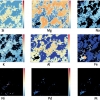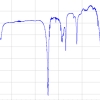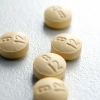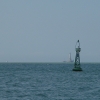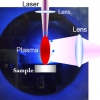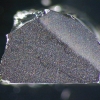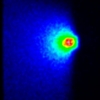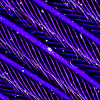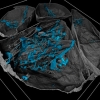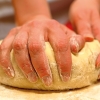Articles
Laser-induced breakdown spectroscopy: a unique analytical tool for the geosciences
Whether it is looking at geological samples to exploit potential mineral deposits, identifying the provenance of gemstones or exploring the surface of Mars, LIBS has proven to be a valuable technique. The ability to take the instrument into the field with the development of handheld spectrometers has only enhanced its utility.
FAIR practice
Following our articles on the FAIR initiative, we now look at some examples of the FAIRification of data handling, collection and archiving.
FAIR enough?
The Tony Davies Column offers a challenge to us all with another contribution on FAIR data, which should be Findable, Available, Interoperable and Readable. It is clearly the way we should all be going, everybody from manufacturers and software developers, through researchers to publishers needs to work together.
Traceable measurements by atomic spectrometry
Mike Sargent gives an overview of traceability in atomic spectroscopy. He explains the background, as well as more specialised areas such as inductively-coupled plasma mass spectrometry (ICP-MS).
analytica virtual 2020: a new platform in times of contact and travel restrictions
How did a major trade show organiser cope with the disruption of COVID-19? Susanne Grödl, Exhibition Director of analytica for Messe München, gives her experience.
The determination of elemental impurities in vitamin B12 supplements using triple quadrupole ICP-MS
This article sets out to demonstrate the accurate determination of elemental impurities, especially As, in vitamin B12 according to USP chapter <233>.
Determination of macroelements in potable waters with cell-based inductively-coupled plasma mass spectrometry
With a wide range of concentrations of elements in potable waters, their accurate determination is difficult with ICP-MS. It is possible, using a cell-based instrument, to “tune” the signal sensitivity of particular elements and so keep all them within the dynamic range of the instrument.
Robust single method determination of major and trace elements in foodstuffs using the Thermo Scientific iCAP PRO X Duo inductively coupled plasma optical emission spectrometer
A sponsored article demonstrating the ability of the Thermo Scientific™ iCAP™ PRO Series inductively coupled plasma optical emission spectroscopy instrument to determine trace elements and major components in foodstuffs to comply with regulations.
COVID-19: Lock-down and up-skill
With a significant proportion of our regular readership probably under home lock-down, we were wondering if we could help you at this difficult time by pointing out some useful online resources. So, when we finally come out of this pandemic, you could do so better skilled and more up-to-date than when we went in to it.
Planning for EuroAnalysis 2021
Tony and Lutgarde Buydens give us an update on the planning for the major EuroAnalysis 2021 conference, which is being held in Nijmegen, the Netherlands, at the end of August 2021. At this stage, they are keen to gather suggestions from readers on topics they would like to see covered. Groups are also invited to consider hosting their own event under the EuroAnalysis 2021 banner.
Direct analysis of trace elements in estuarine waters using triple-quadrupole inductively coupled plasma-mass spectrometry
Estuaries are where much of our marine pollution is to be found, being the gateway between the land and the ocean. They are also where much of our seafood comes. So, knowledge of elemental contamination in estuaries is vital to protect us from the ingestion of polluted seafood.
What developments do you need to work more efficiently?
Tony Davies continues his quest to find out what you all need to work more efficiently. You will remember that in the last issue, Tony introduced his survey to discover what developments were needed in spectroscopy by readers. Some of the initial responses are explored, and Tony finds that he has opened a “can of worms”.
If laser-induced breakdown spectroscopy was a brand: some market considerations
The transparent witness: forensic examination of glass evidence at the Bundeskriminalamt
This article is is a fascinating look into the use of laser ablation inductively coupled plasma mass spectrometry in forensic examination of glass fragments. These are often associated with crime scenes and easily “attach” to any people near them. Thus, they can be used to link criminals to their crime and to provide information on where a glass fragment might have originated.
Application of laser-induced breakdown spectroscopy for surface hardness measurements
Another surface problem is tackled by Richard Pilkington, Stuart Astin and John Cowpe: “Application of laser-induced breakdown spectroscopy for surface hardness measurements”. Measuring the hardness of materials is not entirely straightforward, and the authors show that laser-induced breakdown spectroscopy offers the potential for in situ hardness measurements, without prior sample preparation.
The use of inductively coupled plasma mass spectrometry to quantify chemical hazards in natural history collections: arsenic and mercury in taxidermy bird specimens
Stanislav Strekopytov tells us about “The use of inductively coupled plasma mass spectrometry to quantify chemical hazards in natural history collections: arsenic and mercury in taxidermy bird specimens”. It is quite shocking to learn about the use of poisons to preserve taxidermy specimens in the past. Nowadays it is essential that the dangers from such specimens are known before they can be handled by museum staff and particularly if they might be touched by visitors. ICP-MS analysis provides fully quantitative information on bulk contents of toxic elements in taxidermy specimens and so is well suited to this task.
What's up doc: High-precision isotopic analysis of essential metals in biofluids for medical diagnosis
Research is under way as to the possibility of using high-precision isotopic analysis of metals in a biomedical context. The goal is to develop methods for medical diagnosis on the basis of isotopic analysis of mineral elements in biofluids, for diseases that can otherwise only be established at a later stage or via a more invasive method (e.g., a biopsy) and/or for prognosis purposes. Whilst this work is in a very early stage, it is known that various diseases have an influence on the uptake, metabolism and/or excretion of essential mineral elements and thus, can cause a difference in their isotopic composition in biofluids.
Two dimensional elemental mapping by laser-induced breakdown spectroscopy
The authors tell us about “Two dimensional elemental mapping by laser-induced breakdown spectroscopy”. LIBS seems to be finding increasing applications and to be receiving interest by the instrument manufacturers at present. The article provides an introduction to the technique and goes on to show how it can be used for elemental mapping in materials analysis.
The impact of water pollution with chromium and nickel to the food chain
Sotiris Stasinos and Ioannis Zabetakis have used ICP-MS to investigate the cross-contamination of food crops by heavy metals in ground or irrigation water. They show that this can occur easily in certain crops, which has serious health consequences for those consuming the food crop. As a consequence of their work, the European Food Safety Authority (EFSA) has been informed about the accumulation of Cr and Ni in food tubers and is taking action.
Determining spatial sodium distribution in fresh and aged bread using laser-induced breakdown spectroscopy
Bread is the major contributor to Na intake in the human diet. For this reason, it is expected that lowering the amount of salt in bread may lead to a substantial reduction in the sodium intake. However, lowering the amount of salt in bread has an impact on the flavour. Using LIBS, a fast and easy-to-use method could be set up to determine Na distribution in baked bread as an innovative tool to help the development of methods to reduce total sodium content in bread.

